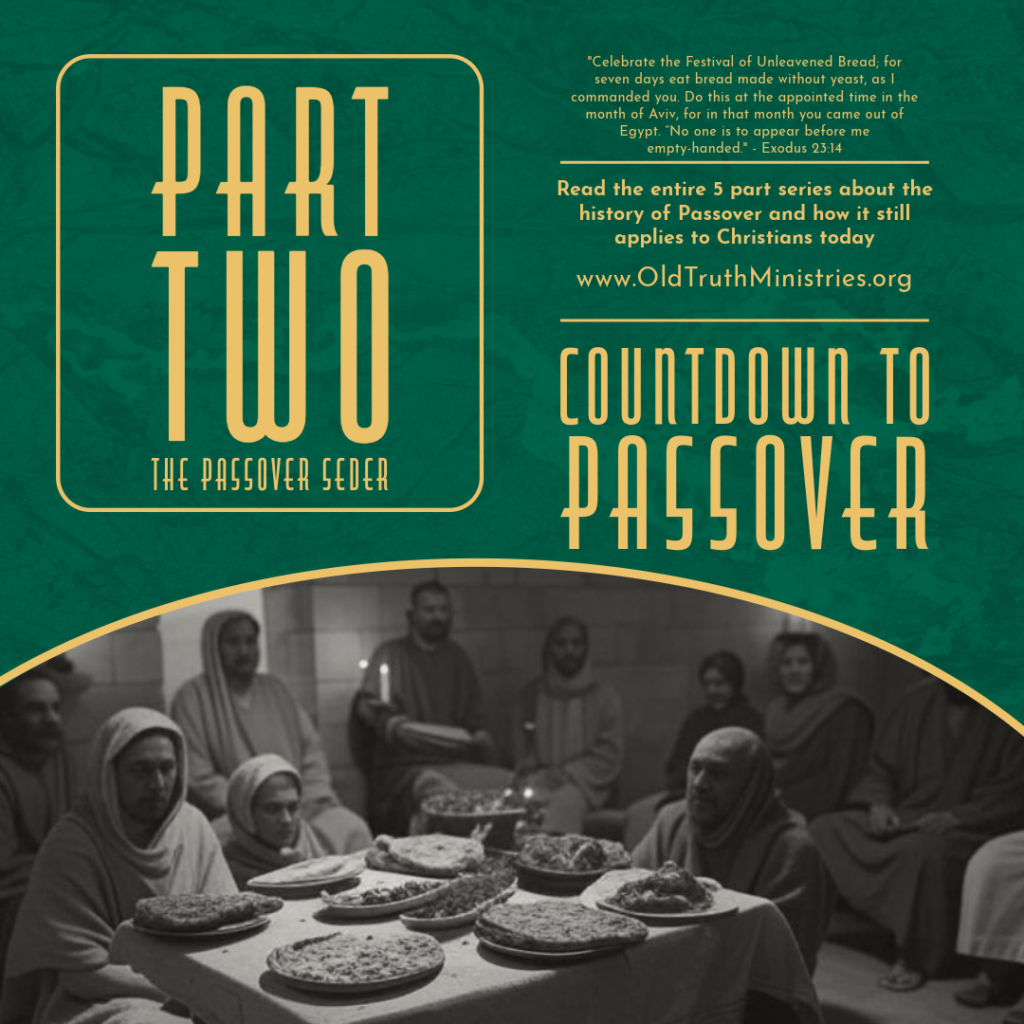The Passover Seder is one of the most significant and deeply symbolic rituals in Jewish tradition, commemorating the Israelites’ deliverance from slavery in Egypt. Rooted in the biblical account of the Exodus, this ritual meal serves as a powerful reminder of God’s redemption and faithfulness to His people. The Seder, which means “order,” follows a structured sequence that has been observed by Jews for millennia, blending historical narrative, scriptural recitations, and symbolic foods to pass the story of deliverance from generation to generation.
The origins of the Seder begin in Exodus 12, where God commands the Israelites to sacrifice an unblemished lamb, apply its blood to their doorposts, and eat the lamb with unleavened bread and bitter herbs. This meal, known as the Pesach (Passover) meal, was to be eaten in haste, with staff in hand and sandals on their feet so that they were ready for immediate departure from Egypt. The blood on the doorposts served as a sign for the Lord to “pass over” the Israelite homes when striking down the firstborn of Egypt. This event marked the final plague, which led to Pharaoh releasing the Israelites from bondage.
God further instructed that this event should be commemorated annually as a LASTING ordinance (Exodus 12:14-17). Over time, as the Israelites settled in the Promised Land and later endured exile and dispersion, the Passover observance evolved into the formalized Seder that we recognize today.
By the time of the Second Temple (516 BCE–70 CE), Passover was centered around the sacrificial lamb at the Temple in Jerusalem. Families would gather in large groups to eat the lamb along with matzah (unleavened bread) and maror (bitter herbs). However, after the destruction of the Temple in 70 CE by the Romans, Jews could no longer offer the Paschal lamb. The rabbis of the time restructured the observance into what became the modern Seder, ensuring that the memory of the Exodus would remain central to Jewish identity.
The Haggadah, a text compiled over centuries, became the guidebook for the Seder, organizing the rituals and storytelling elements into a structured sequence. The Seder was no longer just a meal but a profound teaching tool designed to engage every participant, particularly children, in retelling the Exodus story.
The Structure of the Passover Seder
The Passover Seder follows a 14-step order, each step carrying deep spiritual and historical significance. Here are the key elements:
1. Kadesh (Sanctification) – The recitation of the Kiddush (a blessing over wine) marks the beginning of the Seder.
2. Urchatz (Washing of Hands) – A ritual washing of hands without a blessing.
3. Karpas (Dipping of the Vegetable) – A green vegetable, usually parsley, is dipped in salt water, symbolizing both spring and the tears of the enslaved Israelites.
4. Yachatz (Breaking of the Middle Matzah) – The middle of three pieces of matzah is broken, with one half hidden as the afikoman, which will be eaten later.
5. Maggid (The Telling of the Exodus Story) – The central part of the Seder, where the story of the Exodus is recounted using the Haggadah. This includes the Four Questions asked by the youngest participant and the recitation of the Ten Plagues.
6. Rachtzah (Washing of Hands with a Blessing) – A second handwashing, this time with a blessing.
7. Motzi Matzah (Blessing over Matzah) – A blessing is recited before eating the unleavened bread.
8. Maror (Bitter Herbs) – Bitter herbs (often horseradish) are eaten to symbolize the bitterness of slavery.
9. Korech (Hillel Sandwich) – A combination of matzah, maror, and charoset (a sweet paste representing the mortar used by Israelite slaves) is eaten.
10. Shulchan Orech (The Festive Meal) – A full meal is enjoyed, though no lamb is eaten since there is no Temple.
11. Tzafun (Eating the Afikoman) – The hidden matzah is found and eaten as the “dessert” of the meal.
12. Barech (Grace after the Meal) – A prayer of thanks for the meal, including a third cup of wine.
13. Hallel (Psalms of Praise) – Psalms of praise are recited, often Psalms 113-118.
14. Nirtzah (Conclusion) – The Seder concludes with a final prayer and the hope of celebrating “Next year in Jerusalem!”
The Passover Seder remains a powerful tradition that not only preserves Jewish heritage but also connects believers—both Jewish and Christian—to the redemptive acts of God. Whether celebrated as a Jewish festival or explored for its messianic significance (will discuss in the final episode), the Seder serves as a testimony to God’s faithfulness, the importance of remembrance, and the hope of ultimate redemption.
Through the Seder, each generation continues to fulfill the biblical command: “And you shall tell your son on that day, saying, ‘It is because of what the Lord did for me when I came out of Egypt.’” – Exodus 13:8 – a message that echoes through time, calling all who hear it to remember, reflect, and rejoice.

